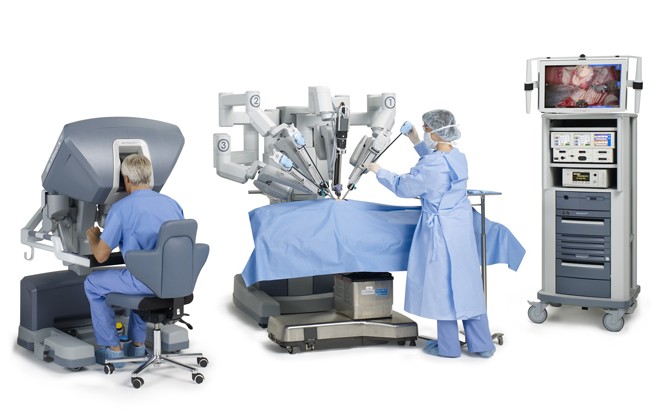Robotic Prostate
- Home
- Robotic Prostate

- Introduction
Robotic prostatectomy is gaining popularity as a less traumatic and minimally invasive prostate cancer treatment. The da Vinci robotic prostatectomy enables surgeons to overcome many of the shortcomings of both open prostatectomy and laparoscopic prostatectomy.
- Quicker Recovery Period After Robotic Prostate Surgery
When a physician determines robotic prostate surgery is the best prostate cancer treatment option, da Vinci’s robotic technology optimizes the chances of a quicker recovery time as opposed to traditional surgical prostatectomy. The smaller incisions required to maneuver the operating arms heal much faster, require fewer sutures and, therefore, are less vulnerable to tearing or infection. The precise movements of the robotic arms allow a more targeted approach for cleaner removal of malignant tissue and reduces damage to healthy tissue during robotic prostate surgery. The operating arms of the da Vinci Surgical System are designed to avoid contact between the operating instruments and the walls of the incision. All of these advantages translate to a speedier and less worrisome recovery period.
- Reduced Risk of Complications With Robotic Prostate Surgery
Surgery is an inherently risky medical procedure. However, for prostate cancer treatment, surgery can be the most effective choice for eradicating malignant tumors without the painful side effects of chemotherapy and radiation therapy. Among the more serious risks associated with surgical treatment is the possibility of infection at the incision site. Such infections are often the primary cause of serious complications which may hamper a quick and uneventful recovery. The da Vinci system greatly mitigates the risk of infection during robotic prostate surgery. First, the size of the incision(s) is significantly smaller with robotic prostate surgery than with the traditional procedure. A standard, non-robotic prostate surgery requires a six- to eight-inch vertical incision to the abdomen. A large, open incision increases the patient’s susceptibility to bacterial infection during and after the surgery. Post-operative infections are more common than intra-operative infections, as hospital rooms are not maintained at the same level of sterility which operating rooms are. The da Vinci robotic prostate surgery system utilizes a much less invasive technique requiring four to five small incisions, each less than two inches. These smaller incisions will heal significantly faster than the large incision needed in traditional surgery.

